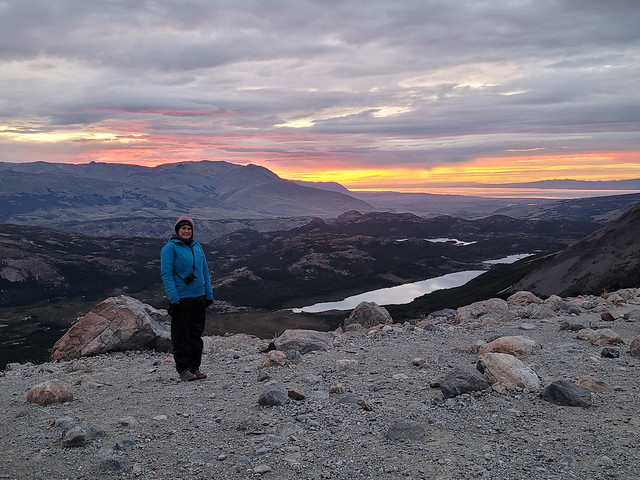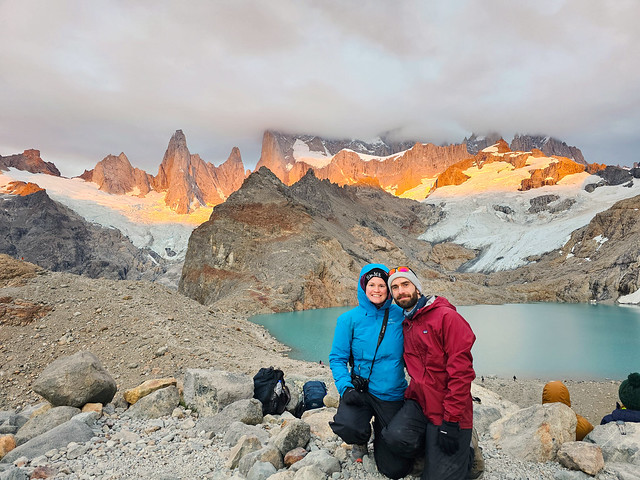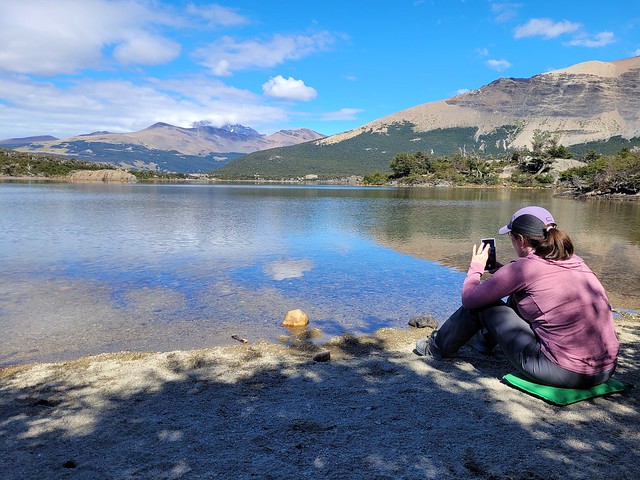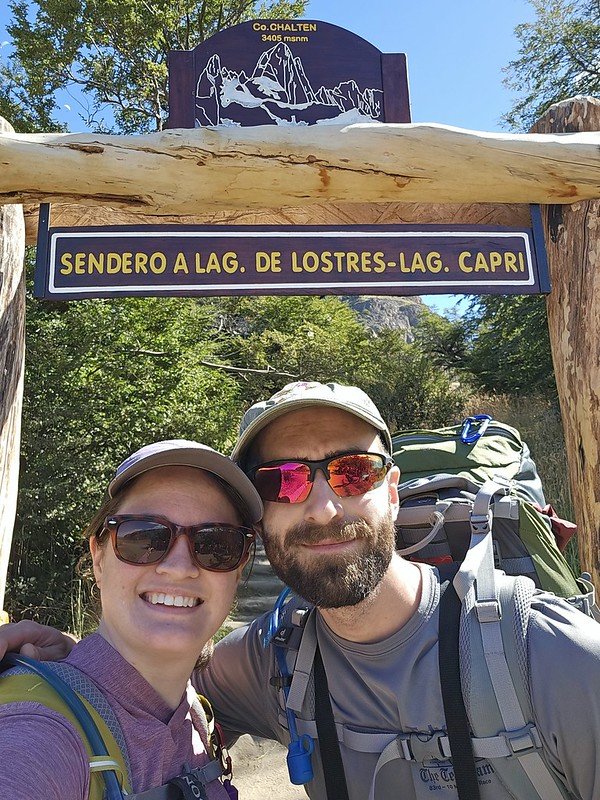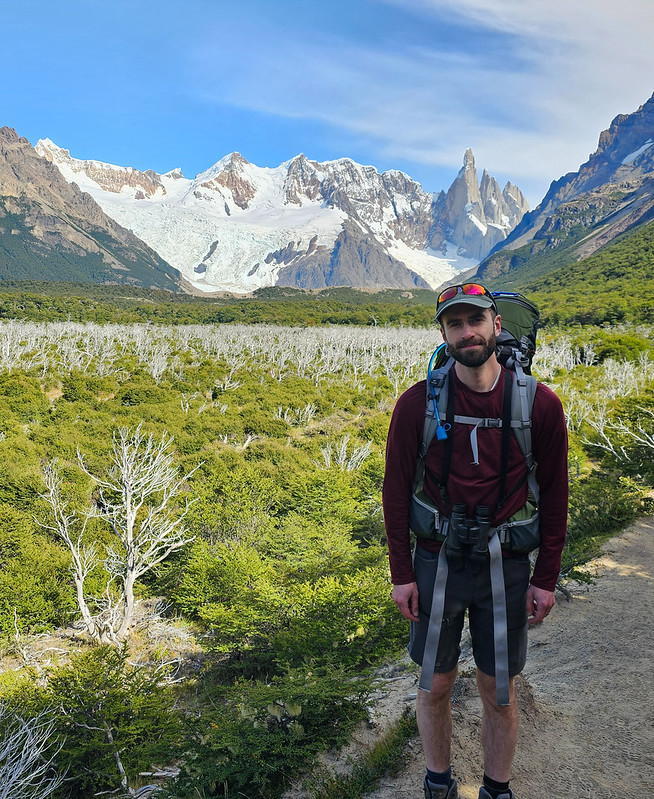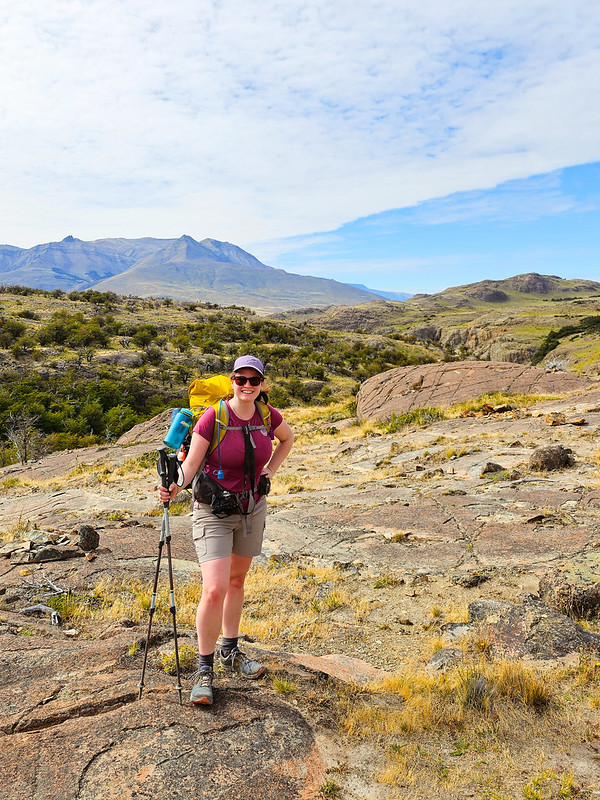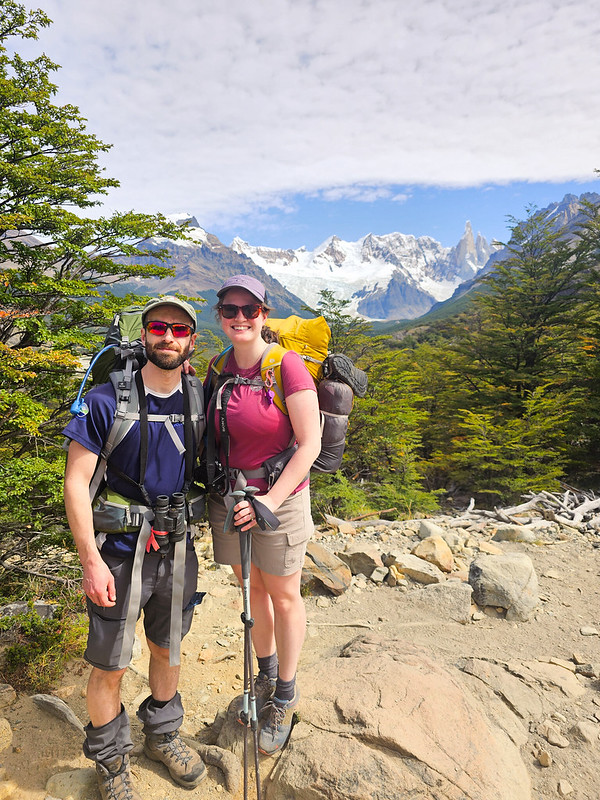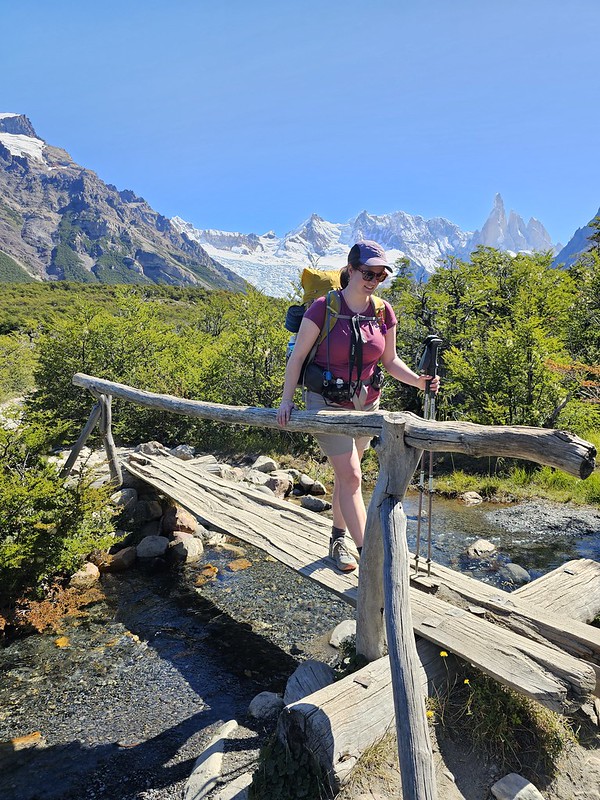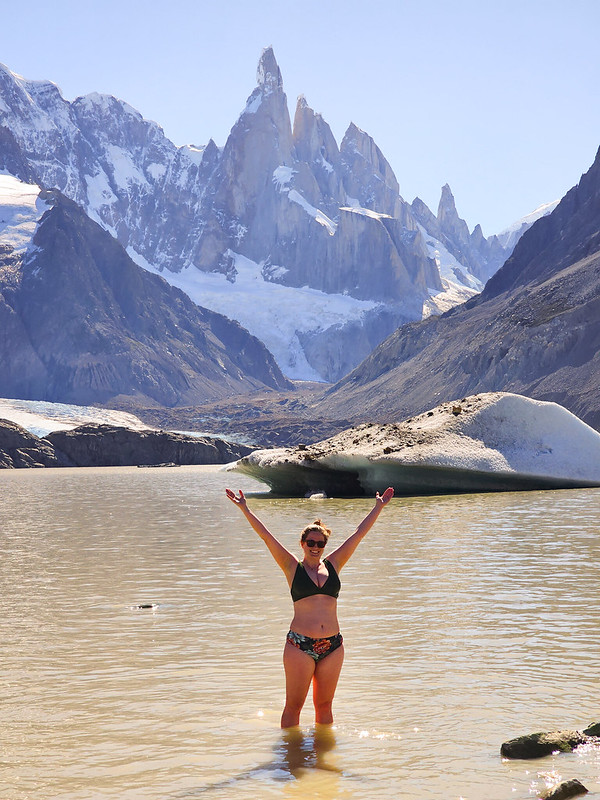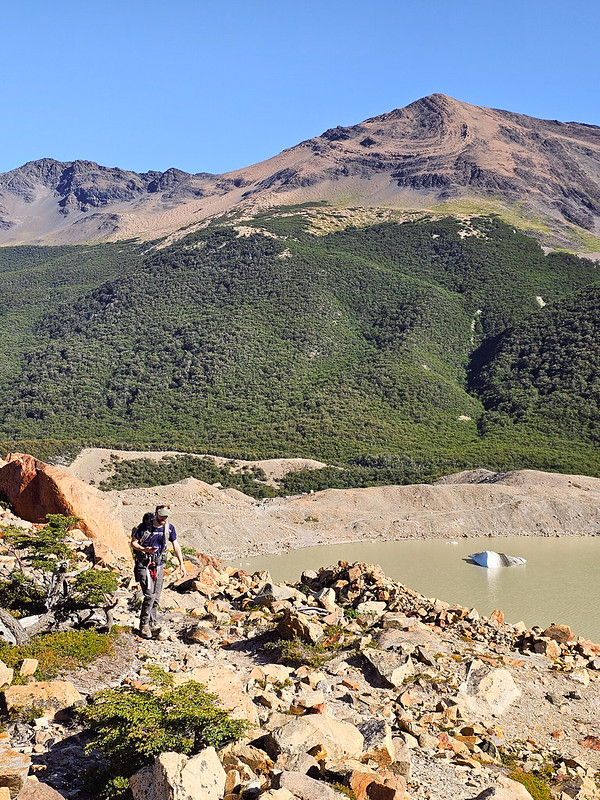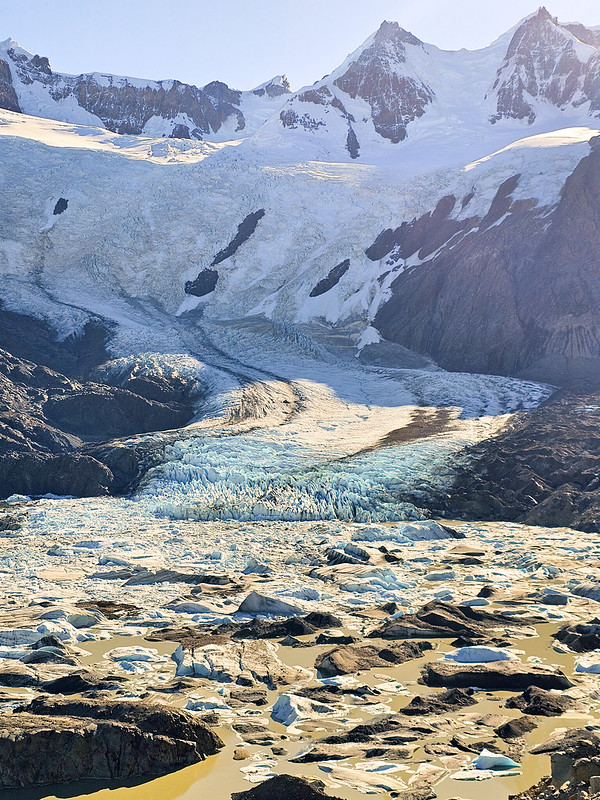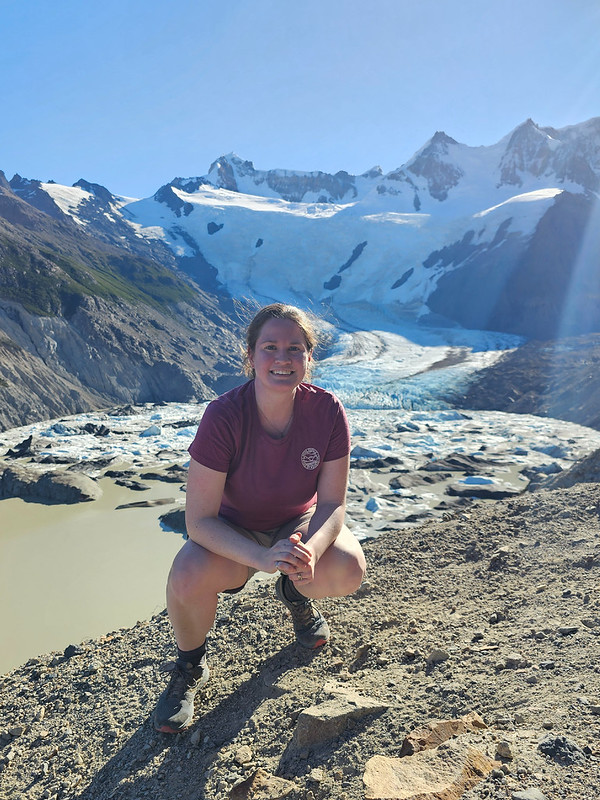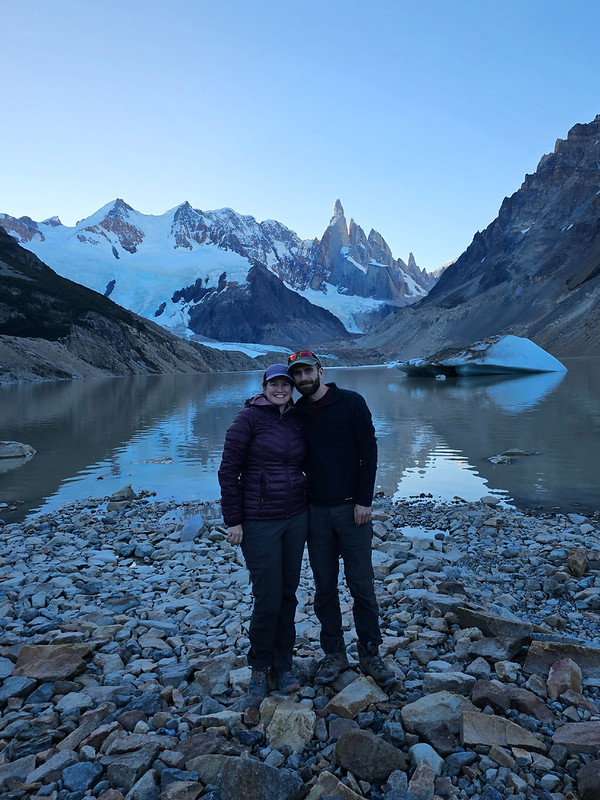We returned to El Calafate after an epic 3 days hiking the Sendero al Fitz Roy in El Chalten. We only had a two-day break before starting our second major hike – 5 days in Torres del Paine National Park. I must admit, these two days were a bit miserable for me. I had caught a cold a few days before and it peaked on our time off. Honestly, it was better than dealing with a cold on the trail, but I was a bit irritable in between.
It’s a 1.5-hour drive from El Calafate to Perito Moreno glacier, which is one of the biggest attractions in the town. Interestingly, both the Sendero al Fitz Roy and Perito Moreno Glacier are located in Los Glaciares National Park, which extends along the border throughout the mountains. Both attractions are extremely popular destinations for tourists, but while Fitz Roy is free to camp and hike, Perito Moreno has a 10,000ARS ($10USD) entrance fee.
Perito Moreno is very well developed as a tourist attraction, with a large visitor centre and several kilometres of extremely well maintained boardwalk extending along the hillside to provide viewing balconies for the glacier. It really bothered me to pay for Perito Moreno and not Fitz Roy. The facilities on the Sendero al Fitz Roy are in terrible condition (I’m mostly talking about the outhouses), and I really wish the government would charge campers $10 a night to upgrade some of the park facilities along the trail. The environment really needs it!
Our driver dropped us at the trailhead for the glacier balconies and we spent several hours walking the boardwalk and viewing the glacier. The weather was drizzling, but it wasn’t full on raining and it started and stopped a lot. The trail was quite empty when we arrived, which was surprising, but I think we were ahead of all the big tour buses, as it did get more crowded later, although it was never overwhelming.
Perito Moreno glacier is unlike any glacier I’ve ever seen. It’s a massive ice sheet that comes down through the mountains from the larger Southern Patagonia Icefield. The glacier extends all the way to the lake, where it discharges into Lago Roca and Lago Argentino (which is right next to El Calafate). The ice extends almost to the walkways, so you’re incredibly close to it! Until 2020, the glacier had remained constant for 100 years, meaning it was neither growing or receding, but it has started to recede since 2020. It has a large impact on the water level in the lakes and can cause flooding in years where there is a high melt.
We spent a few hours walking the boardwalks and watching icebergs calve off from the sheet. You can pay to take a boat out into the lake to get slightly closer to the ice, but you’re so close already, I don’t regret saving our money and lazing around at the balconies. There is a visitor centre with food, but there’s no food available along the boardwalk, so we had brought lunch with us and enjoyed it along some of the benches.
We spent about 3 hours at the balconies in total and then got picked up by our driver. I slept on the way back to town again, while Seth continued to count rhea and guanaco through the window. I decided that I wanted to eat guanaco before leaving the desert and Seth found us a “hip” restaurant with guanaco burgers that turned out to be a dingy pub. Unfortunately, the burger was very disappointing, but I blame the restaurant more than the animal. It was decidedly not hip, but at least I got to try something new on our final day in Argentina.
The next day we had to take a 6-hour bus across the border to Chile. In classic Maria fashion, I didn’t sleep well because I was up all night worrying about missing our bus. This resulted in us getting up early and waiting around for a bus that obviously left late. I was a little bit nervous about crossing into Chile because I had read online that their border control is very strict. We’d dehydrated all our own food for the trip, which was a pleasure to eat on the trail, so I really didn’t want to get it confiscated at the border. Argentina didn’t care at all about what we brought in, but because Chile has a big agricultural industry, they ask you to declare all food. If you don’t, you may not get caught, but if you do, you could be facing large fines. So if in doubt, declare.
To make my dehydrated food look more legit, I actually heat sealed everything into those little foil lined bags used for loose leaf tea, and created fancy labels for each packet. The vibe I was going for was “farmer’s market, but commercially sealed”. It ended up being overkill as no one even bothered to look at it. I wonder if the border guards may have been interested if I entered through an airport, but they don’t even make you take your luggage off the bus when you cross by road.
We did have to get off the bus and put all our day bags through screening, and a border agent inspected the inside of the bus, but no one checked any of the luggage (although the hold may have gotten a sniff test from a border dog). We still declared what we had, but when I said it was “dried hiking food”, they didn’t ask any more questions. I could have saved myself a ton of time on the packaging and just used Ziploc bags like I normally do. They seem to mostly be interested in confiscating any fresh fruit or vegetables. Several people did have fruit in their bag that they did not declare, which got taken, but no one on our bus got fined. It seemed like very normal border control to me, and not scary like what I’d read online.
We arrived in Puerto Natales in the late afternoon, which is the jumping off point for anyone visiting Torres del Paine National Park. It’s an interesting town. It was similar in size to El Calafate, but it had a much different vibe. El Calafate had the feel of a town that was built around tourism, whereas Puerto Natales felt like a town that tourism happened to. We selected our guesthouses based on proximity to the bus depot, so in both instances, it was a walk to get to town, but somehow it felt a lot further in Puerto Natales. The town didn’t feel quite as welcoming to me, although there were a lot less stray dogs (I’ve never seen more stray dogs anywhere than in El Calafate)!
Our guesthouse in Puerto Natales was top notch and had the comfiest king sized bed! After dropping off our gear, we had a lot of errands to run. We’d eaten all of our food from Argentina (to avoid crossing the border with it), so we had to stock up on snacks and breakfast food for our Torres del Paine trek. I’d read online before the trip that it’s easy to find hiking food locally and to not bother bringing your own, but I’m so glad we did! It was so hard finding breakfast and snack food that was filling, enjoyable to eat, and lightweight; I was so glad I didn’t also have to find 5 days’ worth of lunches and suppers! We spent a long time at the grocery store trying to find enough snacks for our week long hike, and it was chaotic because we didn’t have a coin for the shopping cart, so we were forced to run around the store with armloads of food.
Eventually I piled enough food into Seth’s arms that I figured we wouldn’t starve on the trail (obviously we ended up buying way more than we needed) and we went in search of dinner. Everyone eats late in Argentina and Chile and a lot of the restaurants don’t open until 7pm. I wanted to be asleep by 9pm and we still had to re-pack, so we walked around until we found a nice little spot that was open. It was a good meal, but the staff didn’t speak any Spanish so I ended up with something very different than what I thought I’d ordered. I thought I was getting grilled white fish (which is a comfort food for me and I was still sick), but I ended up with the most ridiculous mixed seafood platter. On any other day, I would have been pumped to eat it, but it wasn’t really a “eat mystery seafood” kind of day for me. Fortunately, it was tasty and it ended up being fine.
Seth on the other hand, had ceviche. It was a delicious meal and he savoured every minute of it, but it was many a little too ambitious for his travelling stomach on the day before a major hike. He ended up regretting it the following day (if you catch my meaning). Fortunately, there was no issue that evening and we returned to our guesthouse to repack all our food and bags to start our 5-day trek on the W-circuit the following morning! Check back next week to read about the trek!







